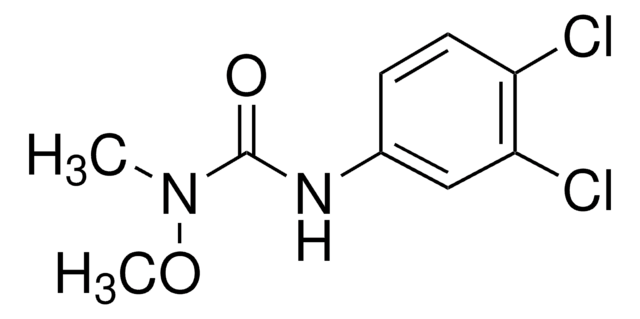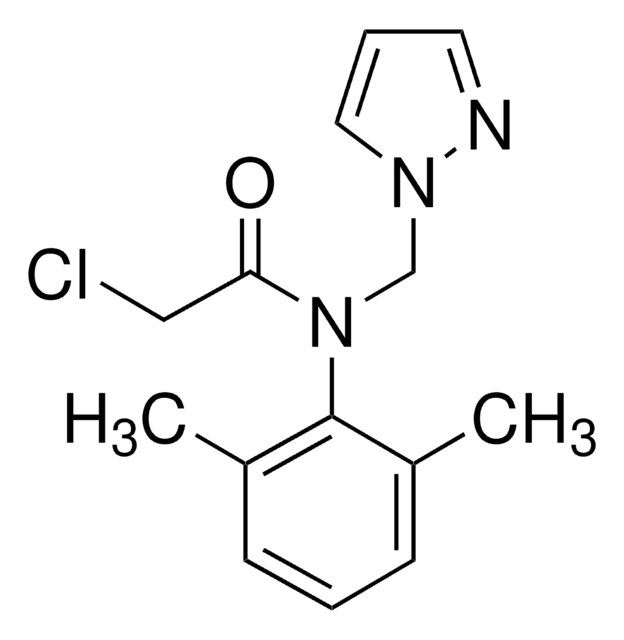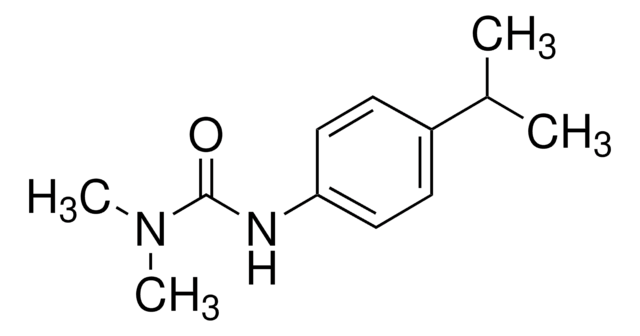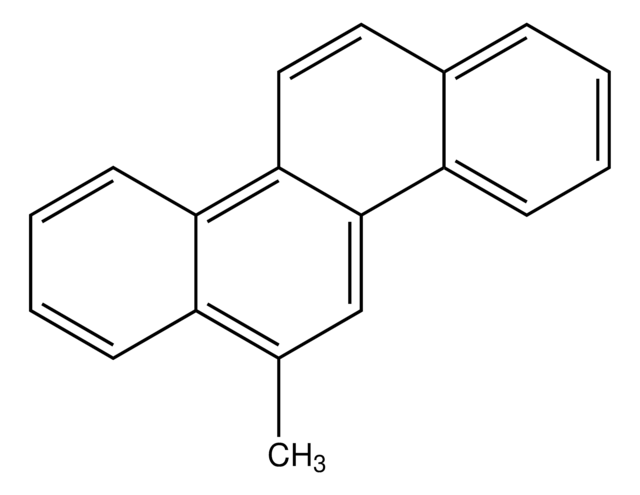45400
Chlortoluron
PESTANAL®, analytical standard
Sinónimos:
3-(3-Chloro-4-methyl)-1,1-dimethylurea
About This Item
Productos recomendados
grade
analytical standard
Quality Level
product line
PESTANAL®
shelf life
limited shelf life, expiry date on the label
technique(s)
HPLC: suitable
gas chromatography (GC): suitable
application(s)
agriculture
cleaning products
cosmetics
environmental
food and beverages
personal care
format
neat
SMILES string
CN(C)C(=O)Nc1ccc(C)c(Cl)c1
InChI
1S/C10H13ClN2O/c1-7-4-5-8(6-9(7)11)12-10(14)13(2)3/h4-6H,1-3H3,(H,12,14)
InChI key
JXCGFZXSOMJFOA-UHFFFAOYSA-N
¿Está buscando productos similares? Visita Guía de comparación de productos
Application
Recommended products
Legal Information
signalword
Warning
hcodes
Hazard Classifications
Aquatic Acute 1 - Aquatic Chronic 1 - Carc. 2 - Repr. 2
Storage Class
11 - Combustible Solids
wgk_germany
WGK 3
flash_point_f
Not applicable
flash_point_c
Not applicable
Elija entre una de las versiones más recientes:
¿Ya tiene este producto?
Encuentre la documentación para los productos que ha comprado recientemente en la Biblioteca de documentos.
Nuestro equipo de científicos tiene experiencia en todas las áreas de investigación: Ciencias de la vida, Ciencia de los materiales, Síntesis química, Cromatografía, Analítica y muchas otras.
Póngase en contacto con el Servicio técnico










